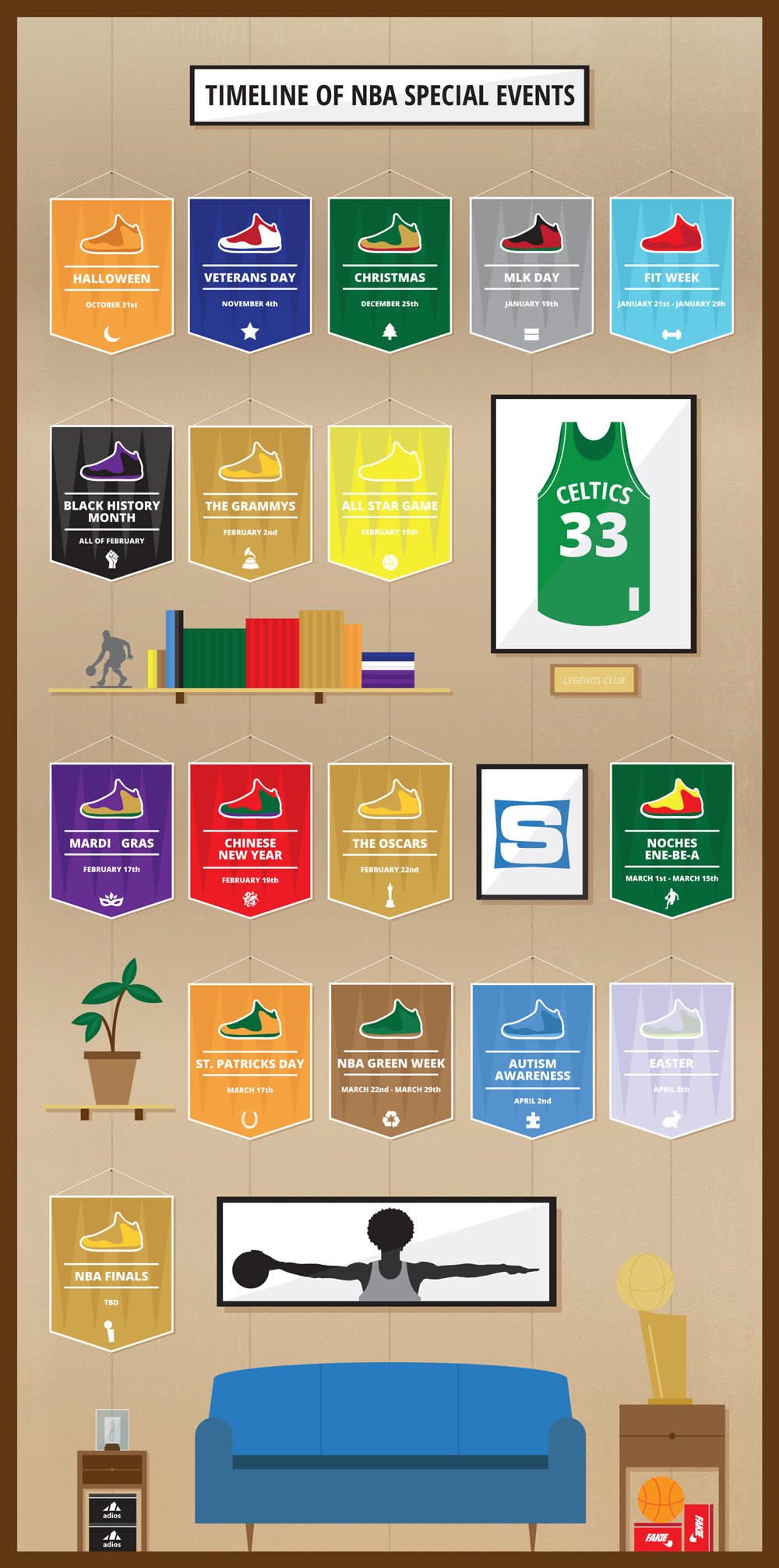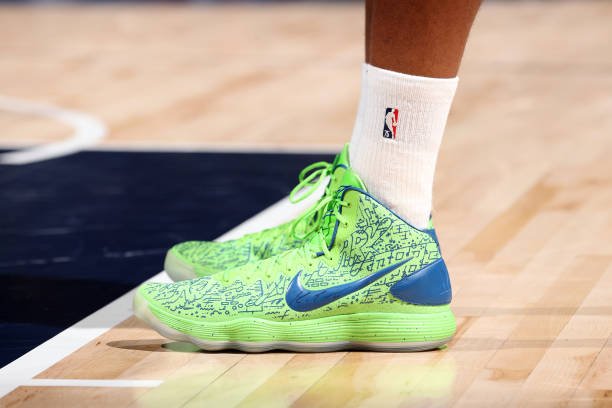The Sole of Basketball: Navigating the NBA Footwear Rules like a Pro
Self-expression was barred from the NBA during games – on players’ feet. Over time, the rules regarding what players may wear on their feet have evolved drastically. Just a few years ago, one of the biggest changes to this rule occurred… but what led up to it?
Throughout the NBA’s illustrious 77-year history, the rules and regulations regarding footwear have only changed a few times. For most of its history, the NBA has enforced that all sneakers must be either 51 percent black or white and can have a minimal team color accent.
The New York Knicks and the Los Angeles Lakers face off in the 1970 NBA Finals. All players are seen with white shoes. (Photo retrieved from Lakers Nation)
This norm was upheld and lacked attention until the 1984-85 seasons. Michael Jordan had a new deal with Nike for his red-and-black Air Jordan 1s. These shoes violated the 51 percent rule with the color scheme mostly being red.
NBA Commissioner David Stern took notice and sent Jordan a warning letter banning the shoes from use in a regular season game. Nike strategically used this ban to create a marketing campaign for the shoe, which garnered significant success. Only a handful of shoes have been banned by the league.
Michael Jordan of the Chicago Bulls goes up for a dunk during the 1985 NBA All-Star Slam Dunk Competition (Photo by Andrew D. Bernstein/NBAE/NBAE via Getty Images)
Jordan’s angst paved the way for the NBA to loosen the rules. In the late 2000s, players began wearing shoes with full team colors. This was a large development in ruling on shoe color. Footwear could now lack the 51 percent black or white that was previously required.
Andre Drummond #1 of the Philadelphia 76ers sports these shoes in a preseason game on October 7th, 2021. The colors match the 76ers blue color scheme. (Photo by Jesse D. Garrabrant/NBAE via Getty Images)
Soon, in 2012, there were novel ‘theme nights’ to the schedule. These allowed players who played during certain periods of time to wear holiday-themed shoes. Some examples are: red, green, or gold on Christmas, orange for Halloween, or purple and black for Black History Month.
Another footwear exception was that players could wear gold-accented sneakers during the NBA finals. Also, last season’s NBA champions could wear gold accents at their first game of the season.
An infographic that depicts the timeline of the theme nights that allowed players to wear special shoes. (Created by Brendan Dunne/Retrieved from Sole Collector)
2018 saw the biggest deregulation of the NBA’s footwear rules. This rule change allowed for players to wear sneakers of any color during any part of the season. The goal of this is to allow players to be increasingly expressive on the court. However, there are still rules that they must follow.
While a player’s footwear is the only article of clothing allowed to bear a commercial logo, there are limits to what brands. The NBA’s policy is that any third-party logos must be preapproved by the league office before players can wear them on the courts.
LeBron James #6 of the Los Angeles Lakers excited after scoring the point that made him the all-time scoring leader, surpassing Kareem Abdul-Jabbar. He rocks vibrant pink shoes that are now allowed after the 2018 rule change. (Photo by Harry How/Getty Images)
Third-party is not explicitly stated in their policy, but the league currently is in an eight-year deal with Nike. Although, this deal was created eight years ago.
Nike has made a push for players to represent diversity in their footwear over its collaboration with the NBA. With their deal potentially ending soon, we may see a shift in the paradigm.
The shoes of Karl-Anthony Towns #32, player on the Minnesota Timberwolves during a game against the Phoenix Suns on November 15th, 2021. (Photo by David Sherman/NBAE via Getty Images)
The expansion of expression is seen as a good step for the league and allows players to represent themselves. Throughout the history of the NBA, we have seen exponential deregulation of the rules pertaining to footwear.
Termination of the NBA and Nike’s contract could lead to more restrictions, but it may also lead to increased allowance of brands. As the league continues to change and adapt to societal norms, aspects such as a player’s uniform change with it.





